Genre: Action Developer: Granite Bay Publisher: Electronic Arts Players: 1 Released: 1994
What’s a pilot to do? After two harrowing struggles with the Middle East’s most deranged madman, it seems as if life has gone back to weary days of paperwork and diplomatic drudgery. No more intense firefights, no more daring rescues, and no more precise aerial strikes. No more chances to play the hero and save the day. All you have to look forward to is years of desk-jockey inactivity while your beloved attack chopper languishes in deep storage. Peace stinks, don’t it? Good thing certain baddies just won’t die. Yep, it’s time to fire up the engines and hit the field of combat one more time in Urban Strike, the third installment in the venerable Strike series and the franchise’s last outing on the Genesis.
This time around EA decided to take the game in a new direction. Jungle Strike had been a logical evolution in game design, offering a straight-forward sequel to Desert Strike instead of truly innovating the formula. And although Jungle turned out great, it was time to add a new ingredient to the recipe, just to jolt gamers’ taste buds. That ingredient was a series of isometric run-‘n-gun missions that took players out of the cockpit and into bunkers, oil derricks, hangars, and bases. BAM! On paper this sounded good, especially if the new “on-foot” sections could impact the gunnin’ genre like Desert Strike had done with helicopter games in general – namely, make the gameplay more realistic and detailed without sacrificing playability.
Sadly, the run-‘n-gun scenarios will not go down in history as an example of good execution. Like I said, the idea was great and could have added yet another layer of tactical play to an already awesome game of thunderous exchanges and close calls. But that little thing called quality got tossed out the window during the coding process. In fact, these missions thumb their noses at everything that made the Strike games so great. There’s no ingenuity or flair to be found here; neither is there any sort of interactivity or variation. Just a bunch of identical mazes with no interesting graphical touches, each infested with dorky enemies and cheap gun turrets. There’s no logic to the layout of the maps and obstacles, and the combat is loaded with impossible scenarios that seem to be designed to frustrate the player. A bad way to start out a review, eh? Keep reading, things get a bit better.
Obviously the focus of any Strike game is the helicopter gunships you fly, or more importantly the fearsome missile racks and deadly chain guns mounted on those vehicles. It’s here that Urban Strike actually surpasses its predecessors, allowing you to commandeer two different choppers, each with different capabilities. One is the speedy assault craft, equipped with a limited array of very lethal armaments, and the other is a more ponderous transport helicopter, outfitted with oodles of light rockets. Also available throughout the game are several other vehicles ranging from armored assault vehicles to lightweight combat motorcycles.
One thing that did bug me about the helicopters was the lack of drift in the controls. Remember how in Desert and Jungle you’d continue to float a ways even after you let up on the throttle? Well, they’ve taken that out almost entirely, leaving a control style similar to the “without momentum” modes of yore. To some this might be a minor gripe, but I’d built up a distinct style over the years that required a considerable amount of skidding, only to realize after a few fiery deaths that success in Urban Strike would require a bit of rethinking. Other than that, the controls do the job adequately. A word of warning: it’s impossible to play the game with a six-button controller, despite what the options screen says. You’ll have to disable the extra buttons or switch to a stock pad thanks to a bug with the “intelligence info” displays.
You do remember the intelligence screens, right? Urban has got a bunch of them, as well as tons of those digitized cut scenes that relate the story, which is a darn good one. I don’t want to spoil anything but suffice it to say that the plot this time around is much more involved and has matured greatly from the previous acts. A comrade from Jungle Strike is killed off in the dramatic opening movie, setting the tone for a Tom Clancy-esque tale of drug lords, political intrigue, and advanced technology. Definitely more grim than the familiar loony escapades and caricatured characters of the first two Strike games.
Which is something you can say about the overall philosophy of the game. While Desert Strike (and Jungle Strike to a lesser extent) seemed bent on becoming the video game equivalent of Hot Shots, Urban Strike tries very hard to be exactly what Mike Posehn and co. were originally making fun of overly serious ’90s action flicks about military aces taking on a mustachioed bad guy and his goon squad. You can see it in the intermissions, the graphics, the scenarios, the animations, everything. To be quite honest, it isn’t very welcome.
Something that did stay the same was the awesome selection of Hollywood-style missions. There’s so much here, so much that transcends the cliche of infiltrating an enemy base and blowing it to smithereens. (Although there’s some of that, too.) Take the second campaign, for example. First you blow up a command center to knock out enemy radar. Next you disable a pair of oil derricks and secure a landing zone. After that comes a water rescue in which you pluck drowning victims from among sharks and enemy gunboats. Then you continue on to take out a destroyer, rescue sailors from a sinking nuclear sub and deliver a repair package, disable hostile jets before they launch, and recover a captured copilot. From there you must secure another landing pad and infiltrate the oil rig to rescue an officer and set his beacon in order to call in an air strike. The obligatory tense escape before everything goes up in smoke ensues.
That’s just one campaign. Each objective presents its own unique difficulties, as well as parameters you can exceed. Supposed to rescue fifteen swimmers? Rescue twenty for extra points. Supposed to toast a landing strip? Send that command post a ways out to its fiery death and capture an enemy commander in the process. And don’t forget the constant struggle to maintain your supplies of fuel, armor, and ammo. Urban Strike throws map after map at you, each sporting a dizzying amount of bonus targets, secret pickups, hidden goodies, and undocumented mini-missions. There’s more than one way to approach any situation and – this is the clincher – you don’t even have to do the missions in order. Yeah, you heard that right. Feeling brave and want to tackle POW camp before you put the radar out of commission? Go right ahead. Want to take on that armored division in something other than your chopper? Knock yourself out. Although we sometimes take destructible environments and open-ended design for granted these days, that sort of freedom wasn’t very common in the 16-bit era.
There are, of course, some people out there who absolutely hate the entire gameplay style of the Strike series. They, of course, can leave this one alone. To everyone else? Well, first I’d recommend you pick up Desert Strike. If you love it, go for Jungle Strike. And if you’re still not tired of the formula by then? Pick up Urban Strike. The reason I’d save it for last is because, despite how good the game is, there’s something wrong, some monkey wrench lodged deep in the gears and machinations of the coding. (No, it’s not just the run-‘n-gun drivel.) It’s more basic than that, almost more a sin of omission than commission. It’s as if the game simply doesn’t possess the genius, the inspiration that powered the first two games. But it’s still a great adventure and deserves a play… eventually.
SCORE: 7 out of 10


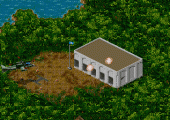
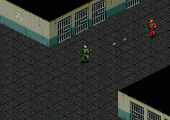
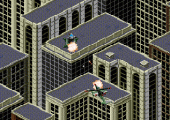
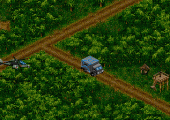
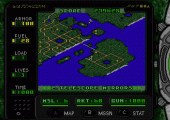
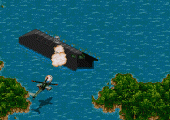
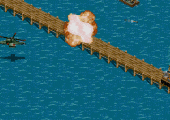
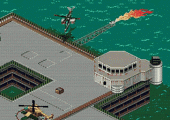
Recent Comments